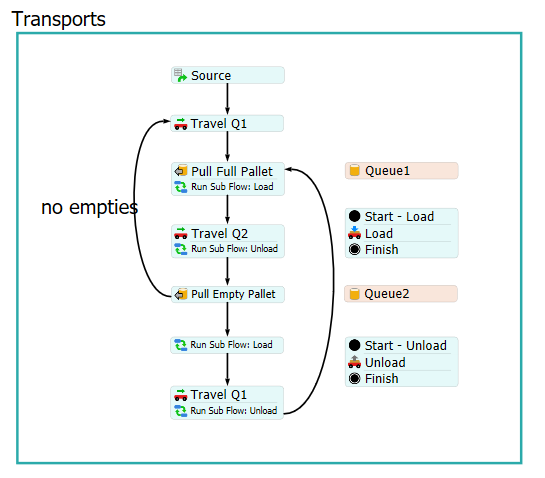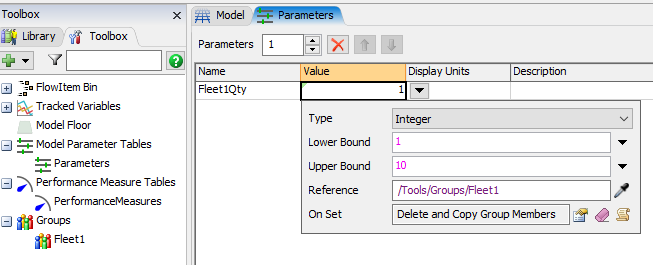I want to create a custom task sequence in 3D model for transporters(dispatcher) with process flow.
What is the process/ goal - To run experimenter/ optimization model to calculate number of forklifts needed.
What is the process -
1. Transporter pick 2 pallets from Que.
2. Drop to buffer - 2 pallets at at a time
3. From same place, pick two empties if available
4. Drop back to Que - 2 empty pallet at a time
Is there a way where I can create a process flow just for this operation of transporters? Any model depicting this process will be really helpful (using FlexSim 22.0.5)



